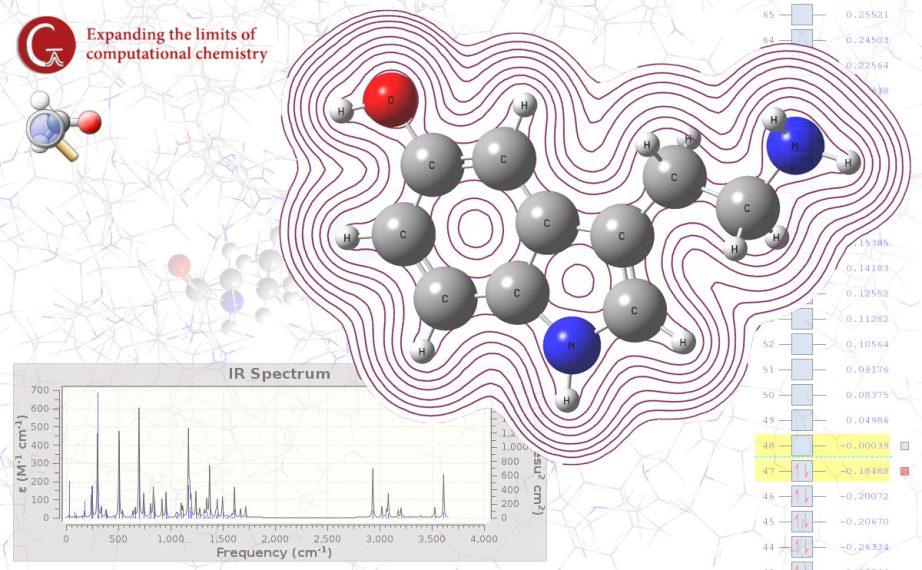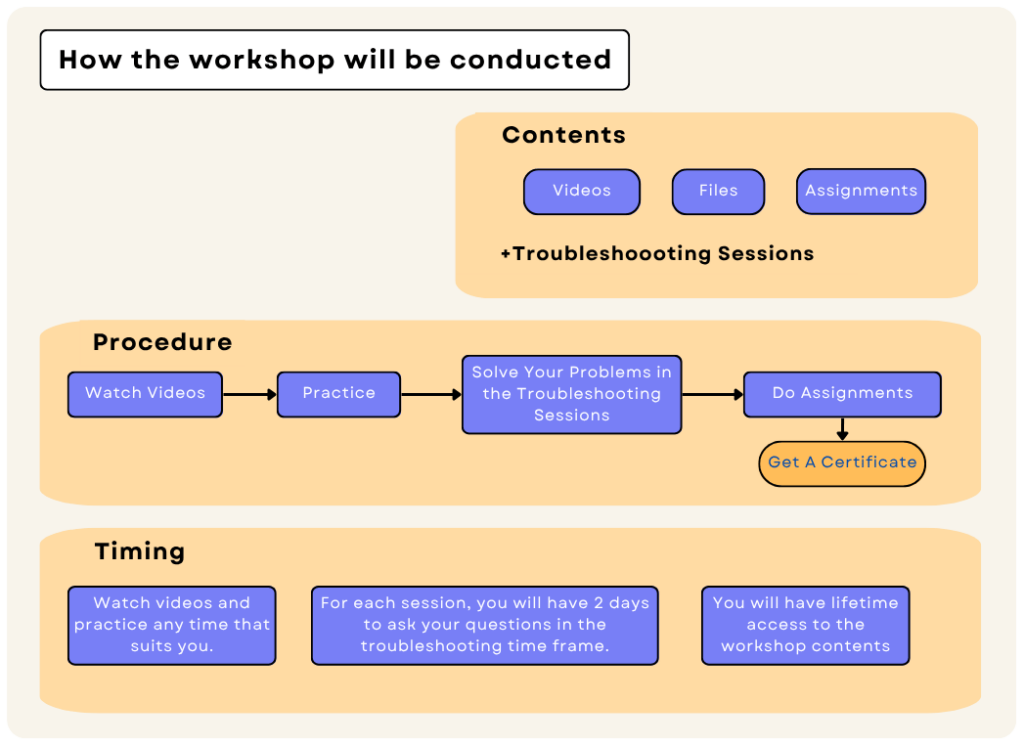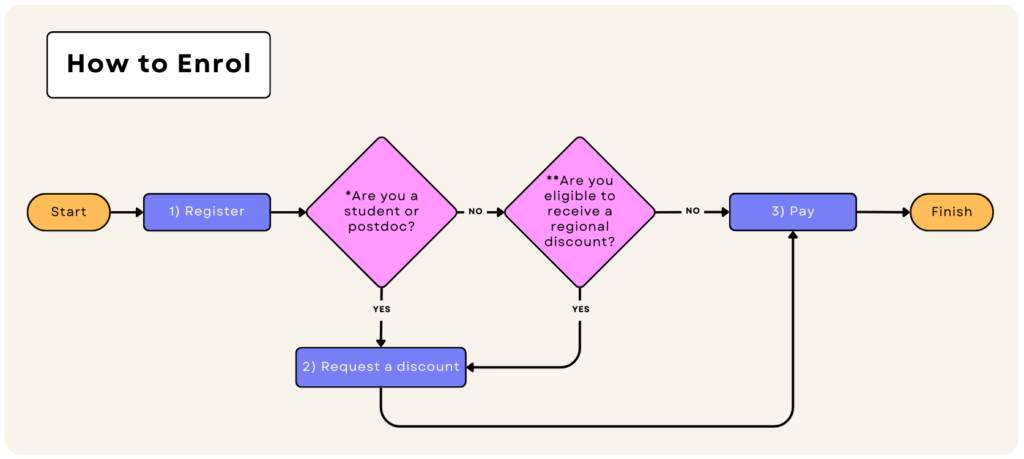Online Gaussian Workshop + Troubleshooting

Gaussian 16 is a modern computational chemistry package used by scientists and researchers in chemistry, biochemistry, physics, and materials science. It offers a comprehensive set of quantum chemical and molecular mechanics methods for performing a wide range of molecular modelling and analyses, including molecular structure optimizations, vibrational spectroscopy, thermochemistry calculations, reaction mechanism studies, and more. The Gaussian software is a popular package because of its accuracy, flexibility, and user-friendly interface. Thanks to its powerful algorithms and advanced features, Gaussian 16 is a powerful tool for scientists looking to enhance their knowledge of molecular systems and chemical reactions.
How we conduct this online Gaussian workshop
Computational chemistry is a complicated art that needs training, practice, and a solid theoretical foundation. In addition, you will encounter numerous difficulties while utilising the software. Thus, the Insilicosci online Gaussian workshop is more than just an online course.
Our Gaussian workshop has two major components: online content and troubleshooting sessions. The online content includes video tutorials and assignments. In each session, we first explain the theory behind the computational methods and then use those methods in practice. At the end, there are a few exercises to solidify your understanding.
And because encountering issues and having questions is a natural part of learning computational techniques, we also provide you with a chat environment to ask questions from the workshop instructor and discuss any problems related to the lessons. Each session has a dedicated chat group on our private server. You can ask questions within a 2-day window for each session.
You will have lifetime access to the workshop videos and lessons. However, we recommend watching each session content within two days to ask questions during its troubleshooting timeframe.

schedule
Next Workshop
- The upcoming Gaussian workshop is scheduled for August 12-25, 2025.
- Upon enrollment, you can access the workshop contents and will have lifetime access to the workshop content.

Syllabus
Session One: Theoretical Fundamentals and Getting Started with Gaussian 16
Introduction To Computational Methods
Explaining The Concept of Basis-Sets
Open-Shell and Closed-Shell Calculations
How To Choose A Suitable Computational Level
Installing and Running Gaussian 16 and GaussView on a Windows Machine
Batching Gaussian 16 Calculations on Windows
Installing and Running Gaussian 16 and GaussView on a Linux Machine
Batching Gaussian Calculations on Linux
Session Two: Gaussian 16 Input and Output Files
- The Anatomy of Gaussian Input and Output Files
- Creating Gaussian 16 Input Files
- Making Multi-Step Gaussian Input Files
- Restarting Gaussian 16 Calculations
- Introduction to the GaussView Software
- Explaining Internal Molecular Coordinates
- Drawing Molecular Structures using GaussView
- Hands-On Practice: Writing Various Gaussian Input Files
- Hands-On Practice: Drawing Various Organic and Organometallic Molecules
Session Three: Geometry Optimisation
- Introduction to the Self-Consistent Field Method
- the Explanation of the Potential Energy Surface
- Explaining Optimization Algorithms
- Geometry Optimisation Calculation
- HOMO-LUMO Energy Calculation
- Visualising HOMO-LUMO Orbitals
- Visualising Electron-Density Surfaces
- Conformational Analysis using Gaussian 16
- Calculating the Interaction Energy of Two Molecules
- Introduction to Basis-Set Superposition Error (BSSE)
- BSSE Calculation with Gaussian 16
- Hands-On Practice: Optimising the Molecular Structure of the Dopamine Molecule
- Hands-On Practice: Visualising the Frontier Orbitals and Electron Density Surface of Dopamine
- Hands-On Practice: Calculating the Interaction Energy of the Cytosine-Guanine Base Pair
- Hands-On Practice: Calculating the Basis Set Superposition Error for the Cytosine-Guanine Interaction
Session Four: Spectroscopy and Thermochemistry
- Calculating Vibrational Frequencies Using Gaussian 16
- Visualising IR, Raman, and VCD Spectra Using GaussView
- Harmonic and Anharmonic Vibrational Frequency Calculations
- Fixing Negative Frequencies
- Calculating Free Energy and Enthalpy of Chemical Reactions
- Calculating Ionization Potential Using Gaussian
- Calculating Electron Affinity Using Gaussian
- Calculating Atomization Energy Using Gaussian
- Calculating the Heat of Formation Molecules
- Calculating the Free Energy of Chemical Reactions
- Calculating the Enthalpy of Chemical Reactions
- Hands-On Practice: Calculating the Vibrational Frequencies of the Serotonin Molecule
- Hands-On Practice: Investigating Thermochemistry of Cyanide and Methanol
- Hands-On Practice: Calculating ΔG and ΔH of the Combustion of Methanol
Session Five: Examining the Mechanics of Chemical Reactions
Locating Transition States on the Potential Energy Surface Using the QST2 and QST3 Methods
- Finding High-Level Transition States Using the Berny Algorithm
- Verifying Transition States Through Intrinsic Reaction Coordinate (IRC) Calculation
Introduction to Redundant Internal Coordinates
Finding Transition States by Freezing Coordinate
- Finding Transition States by Scanning Coordinate
- Introduction to the Eyring Equation and the Estimation of the Rate of a Chemical Reaction
- Explaining the Elementary Chemical Reaction
Investigating Chemical Reaction Mechanisms with Gaussian 16
- Hands-On Practice: Utilising the QST2 Approach to Determine the TS Structure for a Keto-Enol Tautomerism
- Hands-On Practice: Utilising the QST3 Approach to Determine the TS Structure for the Nitrophenyl Proton Transfer Reaction
- Hands-On Practice: Determining Nitrophenyl’s Proton Transfer Reaction Coordinate
- Hands-On Practice: Finding the TS of the 2-propenyl and Chloroallene Reaction Using the Freezing Technique
- Hands-On Practice: Finding the TS of Malondialdehyde Bond Rotation Using Scanning Technique
Hands-On Practice: Studying A Metal-Catalysed Polymerisation Mechanism Using Gaussian 16
Session Six: Solvation Models and NMR Calculations
- Introduction to the Self-Consistent Reaction Field (SCRF) and the Polarizable Continuum Model (PCM) Solvation Models
- Modelling Chemistry in the Presence of a Solvent
- Calculating the Free Energy of Solvation
- Introduction to NMR Spectroscopy
- Computing NMR Magnetic Shieldings Using Gaussian 16
- Visualizing NMR Spectrum and Chemical Shifts Related to A Reference Substance with GaussView
- Generating Advanced NMR Spectra, Including Spin-Spin Coupling Calculations
- Evaluating the Aromaticity of Molecules Using the NICS Index
- Hands-On Practice: Comparing Dopamine Solubility in Water and Chloroform
- Hands-On Practice: Computing the NMR Spectrum of the Dopamine Molecule in a Solution
- Hands-On Practice: Comparing the Aromaticity of the Azulene Rings
Session Seven: Modelling Excited States
- Introduction to Excited States and Various Methods for Modelling Them
- Calculating Excited States with TD-DFT, CIS, EOMCCSD, and ZINDO Methods
- Visualizing UV-Vis Spectrum in GaussView
- Explaining Excitation Energies and Oscillator Strengths
- Visualizing the Electron Density and ESP Map of Excited States Using GaussView
- Plotting Electron Difference Density Maps to Better Understand Excited States
- Creating a Map of the Electron Difference Density on the Total Electron Density
- Calculating the Properties of Multiple Excited States of a Molecule Simultaneously
- Introduction to Equilibrium and Non-equilibrium Solvation in Gaussian
- Performing Equilibrium and Non-equilibrium Excited State Calculations
- Calculating the Emission Spectrum of Florecent Substances
- Introduction to the Vibrational States and Franck-Condon Principle
- Conducting Franck-Condon Analysis Using Gaussian
- Hands-On Practice: Modelling Malondialdehyde Excitation Using Various Computational Methods
- Hands-On Practice: Visualizing the Malondialdehyde’s Excited States Using Different Techniques
- Hands-On Practice: Computing the Partial Charges of Malondialdehyde’s First Five Excited States
- Hands-On Practice: Comparing the Equilibrium and Non-equilibrium Excitation of Nile Red in a Non-Polar Solvent
- Hands-On Practice: Computing the Advanced UV-Vis Spectrum of Thionine, a Dye Compound
How to enrol in the workshop

Contacts
Students and Postdocs
Others
129.00 USD
199.00 USD
- To use the student & postdoc plan, You need to provide us with a valid student ID card or any document that proves your student or postdoctoral status.
- Also, depending on your location, you may qualify for regional discounts. Check the regional discounts section to see how much you can save.
Regional Discounts
We are not communists, but we believe everyone should have the opportunity to learn and thrive, so we offer discounts based on purchasing power in various countries to make education accessible.
- To receive a discount for a specific country, you need to be a resident of that country.
- If you enrolled with a discount code, do not use a foreign VPS/VPN while participating in the workshops.
- To receive a discount code, please send us an image of your student card or any document showing you are currently studying or residing in a specific country.
- There is no need for an explanation. Just send your document via WhatsApp or email and introduce yourself.
- Please refer to the list below to check how much discount you can receive.
- Afghanistan %60
- Albania %40
- Algeria %50
- Andorra %0.0
- Angola %30
- Argentina %60
- Armenia %40
- Australia %0.0
- Austria %0.0
- Azerbaijan %30
- Bahamas %0.0
- Bahrain %0.0
- Bangladesh %50
- Barbados %0.0
- Belarus %50
- Belgium %0.0
- Belize %0.0
- Benin %50
- Bhutan %60
- Bolivia %40
- Bosnia and Herzegovina %40
- Botswana %30
- Brazil %20
- Brunei %0.0
- Bulgaria %30
- Burkina Faso %50
- Burundi %60
- Cabo Verde %30
- Cambodia %50
- Cameroon %40
- Canada %0.0
- Central African Republic %30
- Chad %30
- Chile %20
- China (Mainland) %20
- Colombia %50
- Comoros %40
- Congo (Brazzaville) %0
- Congo (Kinshasa) %30
- Costa Rica %20
- Croatia %30
- Cuba %60
- Cyprus %0.0
- Czechia %0.0
- Denmark %0.0
- Djibouti %20
- Dominica %0.0
- Dominican Republic %30
- East Timor %30
- Ecuador %20
- Egypt %60
- El Salvador %30
- Equatorial Guinea %30
- Eritrea %60
- Estonia %0.0
- Eswatini %40
- Ethiopia %50
- Fiji %40
- Finland %0.0
- France %0.0
- Gabon %20
- Gambia %50
- Georgia %50
- Germany %0.0
- Ghana %50
- Greece %0.0
- Grenada %0.0
- Guatemala %20
- Guinea %30
- Guinea-Bissau %50
- Guyana %30
- Haiti %20
- Honduras %30
- Hungary %30
- Iceland %0.0
- India %60
- Indonesia %50
- Iran %60
- Iraq %0.0
- Ireland %0.0
- Israel %0.0
- Italy %0.0
- Ivory Coast %40
- Jamaica %20
- Japan %0.0
- Jordan %40
- Kazakhstan %40
- Kenya %40
- Kiribati %0.0
- Kosovo %40
- Kuwait %0.0
- Kyrgyzstan %60
- Laos %60
- Latvia %0.0
- Lebanon %60
- Lesotho %40
- Liberia %40
- Libya %60
- Liechtenstein %0.0
- Lithuania %0.0
- Luxembourg %0.0
- North Macedonia %50
- Madagascar %60
- Malawi %40
- Malaysia %40
- Maldives %30
- Mali %50
- Malta %0.0
- Marshall Islands %0.0
- Mauritania %50
- Mauritius %40
- Mexico %20
- Micronesia %0.0
- Moldova %40
- Monaco %0.0
- Mongolia %50
- Montenegro %40
- Morocco %40
- Mozambique %40
- Myanmar %60
- Namibia %30
- Nauru %0.0
- Nepal %60
- Netherlands %0.0
- New Zealand %0.0
- Nicaragua %50
- Niger %50
- Nigeria %40
- North Korea
- Norway %0.0
- Oman %0.0
- Pakistan %60
- Palau %10
- Panama %0.0
- Papua New Guinea %0.0
- Paraguay %40
- Peru %30
- Philippines %50
- Poland %30
- Portugal %20
- Qatar %0.0
- Romania %40
- Russia %30
- Rwanda %50
- Saint Kitts and Nevis %0.0
- Saint Lucia %0.0
- Saint Vincent and the Grenadines %20
- Samoa %0.0
- San Marino %0.0
- Sao Tome and Principe %0.0
- Saudi Arabia %0.0
- Senegal %40
- Serbia %40
- Seychelles %30
- Sierra Leone %60
- Singapore %0.0
- Slovakia %0.0
- Slovenia %0.0
- Solomon Islands %0.0
- Somalia %50
- South Africa %30
- South Korea %0.0
- South Sudan
- Spain %0.0
- Sri Lanka %60
- Sudan %60
- Suriname %50
- Sweden %0.0
- Switzerland %0.0
- Syria %60
- Taiwan %0.0
- Tajikistan %60
- Tanzania %40
- Thailand %50
- Togo %50
- Tonga %0.0
- Trinidad and Tobago %0.0
- Tunisia %60
- Turkey %60
- Turkmenistan
- Tuvalu %0.0
- Uganda %40
- Ukraine %40
- United Arab Emirates %0.0
- United Kingdom %0.0
- United States %0.0
- Uruguay %0.0
- Uzbekistan %60
- Vanuatu %0.0
- Venezuela %60
- Vietnam %50
- Yemen %60
- Zambia %40
- Zimbabwe %20
Certification
Once you have completed the Gaussian workshop, you can apply for certification.
The certification does not include a grade and only confirms that you participated in the Gaussian workshop.
To qualify for certification, you must attend all the sessions and submit at least 65% of the assignments accurately.
